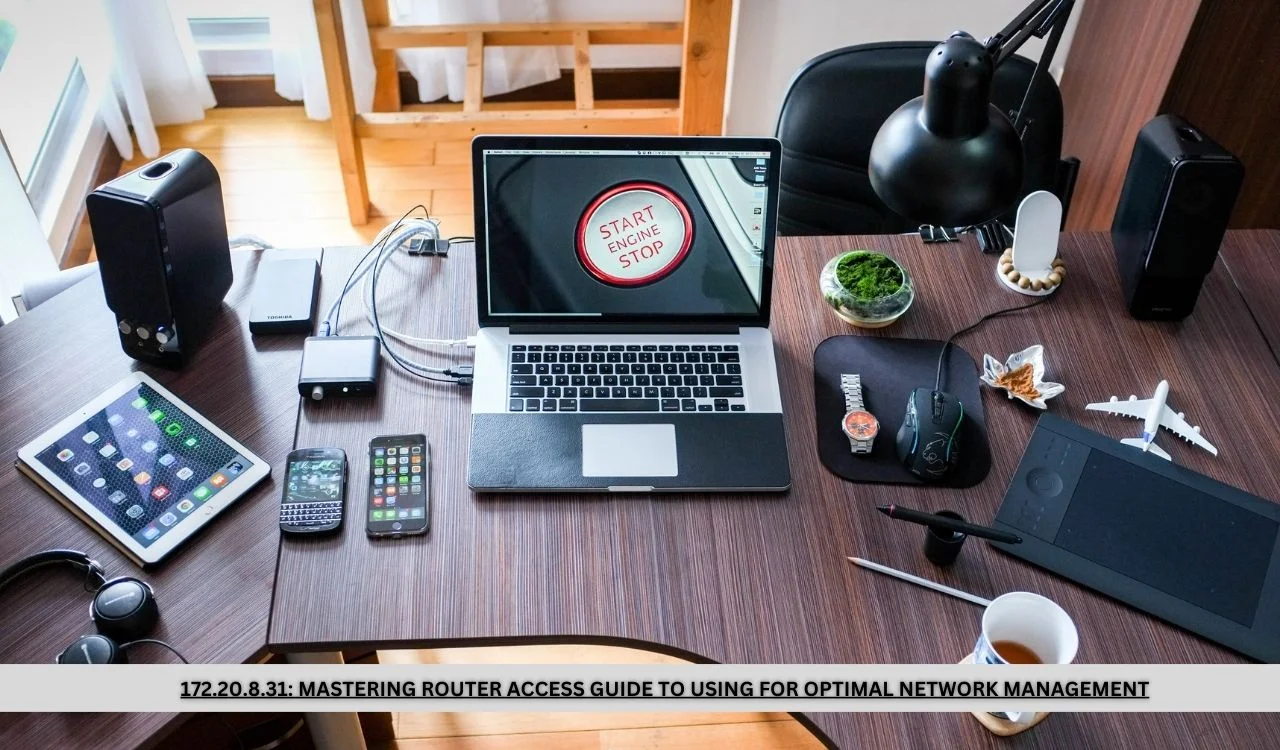Accessing your router’s administration page is essential for managing and optimizing your home or office network. The IP address 172.20.8.31 is one such gateway that may be used to access the router’s settings. However, users sometimes face challenges when trying to log in or encounter unexpected redirects. In this comprehensive guide, we will explore how to effectively use 172.20.8.31 to log in to your router’s administration page, identify common issues and their solutions, and provide clear instructions on how to change passwords or restore factory settings. Whether you’re experiencing access problems or need to reconfigure your network settings, this article will equip you with the knowledge to manage your router with confidence and resolve any issues efficiently.
How to Use 172.20.8.31 to Log In to the Router’s Administration Page
Accessing your router’s administration page is essential for managing your network settings, and the IP address 172.20.8.31 is one such address that might be used for this purpose. To successfully log in to your router’s administration page using this IP address, follow these steps:
- Connect to Your Network: Ensure your device is connected to the router via Ethernet cable or Wi-Fi.
- Open a Web Browser: Launch any web browser of your choice.
- Enter the IP Address: In the browser’s address bar, type
http://172.20.8.31and press Enter. - Enter Credentials: You will be prompted to enter a username and password. If you haven’t changed these, they are typically set to default values provided by the router’s manufacturer.
What Are the Reasons and Solutions for 172.20.8.31 Unable to Access the Router’s Administration Page?
If you encounter issues accessing the router’s administration page at 172.20.8.31, several factors might be at play:
- Incorrect IP Address: Verify that
172.20.8.31is the correct IP address for your router. Routers can have different default IP addresses, and the correct one may be documented in the router’s manual or on a label on the device. - Network Configuration Issues: Ensure that your device is on the same subnet as the router. If your computer is not in the same IP range, you won’t be able to reach the router.
- Browser Issues: Sometimes, browser settings or extensions can interfere. Try clearing the browser cache or using a different browser.
- Router Problems: The router might be malfunctioning or may need a restart. Power cycle the router by unplugging it, waiting for 30 seconds, and then plugging it back in.
- Firewall or Security Software: Your device’s firewall or security software may be blocking access. Temporarily disable these to check if they are causing the problem.
Read Also: CrewLogout.com: Key Features and Benefits for Aviation and Marine Industries

What If I Use 172.20.8.31 to Log In to the Router and It Results in the Login Page of the Internet Service Provider?
If accessing 172.20.8.31 redirects you to the login page of your Internet Service Provider (ISP), this indicates that the IP address might be associated with your ISP’s gateway rather than your router’s administration page. Here’s what you can do:
- Check the IP Address: Confirm whether
172.20.8.31is the correct IP address for accessing your router. ISPs often use their own IP ranges for management. - Access ISP’s Gateway Settings: If
172.20.8.31is indeed an ISP address, you may need to log into your ISP’s portal to manage your network settings or contact their support for router management. - Use Default Router IP: Refer to your router’s documentation to find the default IP address for accessing the administration page. Common alternatives are
192.168.0.1or192.168.1.1.
What Is the Username and Password of Routers Using 172.20.8.31 as the Login Address?
The default username and password for routers using 172.20.8.31 can vary by manufacturer and model. Common default credentials are:
- Admin / Admin
- Admin / Password
- User / User
For the most accurate information, refer to the router’s manual or the manufacturer’s website. If you have changed these credentials and forgot them, you may need to perform a factory reset to restore default settings.
How to Change the Password of Routers Using 172.20.8.31 as the Login Address
Changing your router’s password is crucial for maintaining network security. Here’s how to do it:
- Log In to the Router: Access the router’s administration page using the correct IP address and default or previously set credentials.
- Navigate to the Security Settings: Look for a section labeled “Security” or “Administration.”
- Change the Password: Find the option to change the password. Enter a new, strong password and confirm it.
- Save Changes: Ensure you save the changes. The router may reboot to apply the new settings.
How to Restore the Factory Settings of Routers Using 172.20.8.31 as the Login Address
Restoring factory settings can resolve various issues, including forgotten passwords. Follow these steps to reset your router:
- Locate the Reset Button: Most routers have a small, recessed reset button. You’ll need a paperclip or a similar tool to press it.
- Press and Hold: With the router powered on, press and hold the reset button for about 10-30 seconds until the router’s lights flash or turn off and on.
- Release and Wait: Release the button and wait for the router to fully reboot. This process restores the factory settings.
- Reconfigure Your Router: After resetting, you will need to reconfigure your router settings, including network names, passwords, and any other custom configurations.
Read Also: WUVISAAFT: Understanding Charges

Conclusion
Managing and troubleshooting access to your router’s administration page involves understanding the correct IP address, navigating potential issues, and using default credentials effectively. If you encounter persistent issues, consult your router’s manual or manufacturer support for further assistance. By following the steps outlined, you can ensure a smooth and secure connection to your router’s settings.












